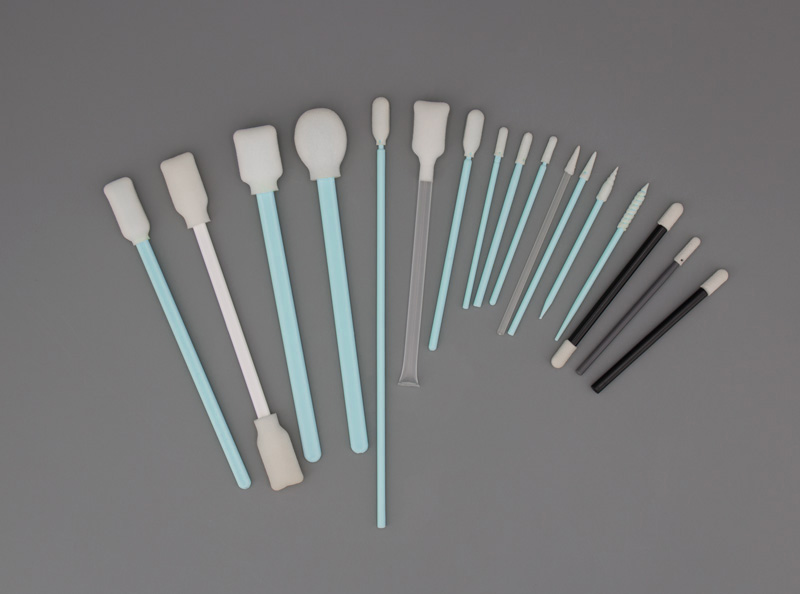Los hisopos de espuma son herramientas esenciales en diversas industrias, desde la electrónica hasta la medicina, para limpieza, aplicando, y eliminación de sustancias en espacios reducidos. Están hechos de material de espuma., que puede ser de espuma de celda abierta o de celda cerrada. Si bien pueden parecer similares, El tipo de espuma utilizada en un hisopo de espuma puede afectar significativamente su rendimiento y su idoneidad para aplicaciones específicas.. En este articulo, Discutiremos la diferencia entre espuma de células abiertas y espuma de células cerradas en hisopos de espuma..
Espuma de celda abierta
La espuma de células abiertas es un tipo de material de espuma que tiene poros o células interconectados., permitiendo el paso de aire y líquidos a través de él. es suave, flexible, y comprimible, lo que lo hace ideal para aplicaciones que requieren una limpieza suave o la aplicación de sustancias.. Los hisopos de espuma de celda abierta se utilizan comúnmente en la industria electrónica para limpiar componentes delicados., como placas de circuito, sin dejar residuos ni rayar la superficie.
Una de las ventajas de la espuma de células abiertas es su alta absorbencia.. Puede contener una cantidad importante de líquido., haciéndolo útil para aplicar sustancias, como disolventes o adhesivos, en cantidades controladas. Sin embargo, Su absorbencia también puede ser una desventaja en algunas aplicaciones., donde el exceso de líquido puede causar daños o contaminación. La espuma de células abiertas también es menos duradera que la espuma de células cerradas y puede descomponerse con el tiempo con el uso repetido..
Espuma de celda cerrada
La espuma de células cerradas es un tipo de material de espuma que tiene poros o células sellados., evitando que el aire y los líquidos lo atraviesen. Es más rígida y densa que la espuma de células abiertas., haciéndolo adecuado para aplicaciones que requieren más presión o abrasión. Los hisopos de espuma de células cerradas se utilizan comúnmente en la industria médica para limpiar y desinfectar áreas de difícil acceso., como instrumentos quirúrgicos o endoscopios.
Una de las ventajas de la espuma de células cerradas es su durabilidad.. Puede soportar el uso repetido y la exposición a productos químicos agresivos sin descomponerse ni perder su forma.. La espuma de células cerradas también es menos absorbente que la espuma de células abiertas., lo que lo hace ideal para aplicaciones donde se requieren cantidades controladas de líquido. Sin embargo, su rigidez también puede ser una desventaja en algunas aplicaciones, donde la flexibilidad y la suavidad son necesarias.
Conclusión
En resumen, La espuma de células abiertas y la espuma de células cerradas son dos tipos de materiales de espuma que se utilizan en hisopos de espuma para diversas aplicaciones.. La espuma de células abiertas es suave, flexible, y absorbente, haciéndolo adecuado para una limpieza suave y aplicación de sustancias.. La espuma de celda cerrada es rígida., denso, y duradero, haciéndolo adecuado para aplicaciones más abrasivas o duras. La elección del tipo correcto de hisopo de espuma depende de los requisitos específicos de la aplicación., como el tipo de superficie, la sustancia utilizada, y el nivel de presión o abrasión necesario.
 Hisopos de espuma para salas blancas, Hisopos de poliéster, Fabricante de kits de limpieza para impresoras – MediTech
Hisopos de espuma para salas blancas, Hisopos de poliéster, Fabricante de kits de limpieza para impresoras – MediTech
